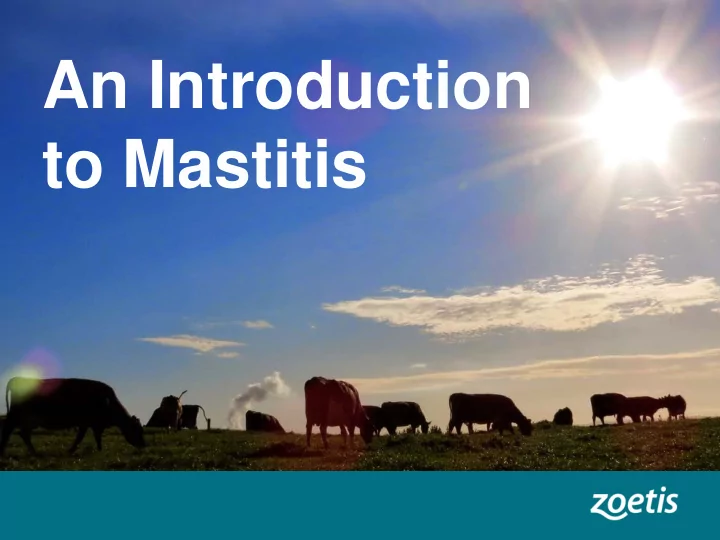

An Introduction to Mastitis
What is Mastitis? • Inflammation of the mammary gland • Usually caused by bacteria
Mammary Gland Anatomy • Alveoli make milk • Milk travels to milk duct • Then gland cistern • Then teat cistern • Then teat canal
How Bacteria Enter the Gland • Through the end of the teat canal – Either from environmental contamination – Or from the cow’s skin – contagious ( cow-associated ). • During lactation the teat end is open • During the dry period a teat plug usually forms
What Bacteria do to Gland • Cause infection and inflammation • Inflammation attracts white blood cells or somatic cells, which accumulate in the milk. • Inflammation causes scarring within the gland, reducing potential milk production.
Pure? 1 litre of milk contains on average 2 million bacteria and 200 million white cells
Clinical vs. Subclinical Clinical = Visible changes in milk and udder • Clots in milk • Blood in milk • Swelling and heat in udder Subclinical = No visible changes in milk or udder • Milk production decreases • Bacteria present • SCC increases
How do we assess? • Appearance of the udder - heat, swelling • Appearance of the milk - clots, blood • S omatic C ell C ount - individual and herd herd tests - R apid M astitis T est • Appearance of the cow - appetite, temperature
Long Term Effects Damage during mastitis can cause scarring and so reduce the amount of tissue able to produce milk in the gland. Subclinical infections increase SCC and can flare up at any stage.
Mastitis in NZ 16 14 12 No. herds 10 8 6 4 2 0 1 3 5 7 9 11 13 15 17 Incidence Rate of Clinical Mastitis (cows/100 cows/lactation) Average clinical mastitis in NZ is 13 – 14 cases per 100 cows per lactation but varies markedly among herds
Bacteria in NZ Other, Strep. 18.7% uberis, 23.6% Mixed cultures, 13.1% Staph. E. coli, aureus, 3.7% 23.5% Bacillus, 4.0% Strep. dys., CNS, 7.2% 6.2% Petrovski et al, 2011. NZVJ 59:6, 317-322
Mastitis through the season Drying off Drying off Rate of New Infection Lactation Dry Period
Mastitis- various interactions cow bacteria mastitis milking environment machines
Ways to Prevent Mastitis • Maintain clean yards/raceways/paddock entrances • Ensure milking machine is working correctly and not causing damage to teats • Breeding of cows eg. udder conformation • Teat spraying after milking • Milking technique and management • Use of Dry Cow Therapy and Teatseal at dry off day in cows • Use Teatseal in Heifers 4-6 weeks prior to the Planned Start of Calving.
Teats before Teatspray Teats after Teatspray
Ways to Treat Mastitis • Lactating Intramammary Antibiotics - Infused into teat canal to treat one quarter at a time • Injectable Antibiotics - Systemic injection • Dry Cow Therapy - For subclinical cases • Culling - For chronic cases
Choosing Treatment Ideally every case of mastitis should have a milk sample taken for culture and sensitivity ie. to identify the bacteria and which antibiotics will kill it. Practically you can use stage of lactation, age of cow, previous herd culture results, individual SCC results and previous treatment responses to choose your treatment. • VETS WILL DISCUSS THIS WITH FARMERS AT THEIR MILK QUALITY/DCT CONSULT
Recommend
More recommend